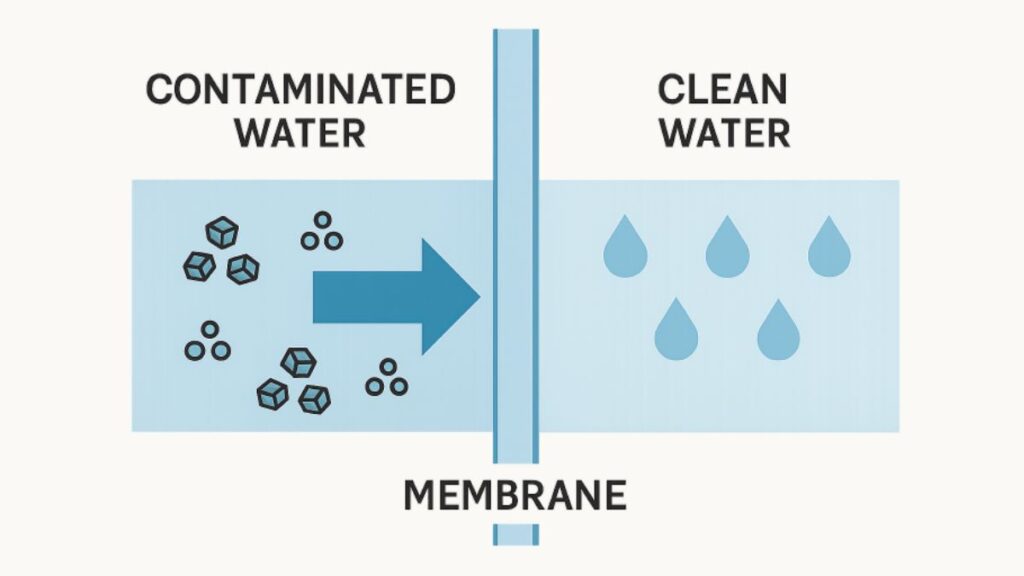Introduction
As water scarcity intensifies around the globe, the need for effective and sustainable solutions has never been greater. Reverse osmosis (RO) has evolved into a cornerstone of modern water purification and desalination, answering critical challenges in the availability of fresh water. The technology is crucial for producing potable water in arid regions and gaining broader adoption in municipal, industrial, and agricultural contexts.
For industries that require reliable water purification solutions, reverse osmosis systems for industrial use in Maryland are now at the forefront of ensuring consistent water quality. The rise in demand for advanced RO systems can be attributed to their ability to efficiently remove dissolved salts, organic compounds, and other contaminants, making them vital for sectors where water purity is mission-critical.
Advancements in RO Membrane Technology
Recent progress in membrane science is revolutionizing the efficiency and reliability of RO systems. Incorporating innovative materials such as graphene oxide and nanocomposites into RO membranes provides superior selectivity and water permeability compared to traditional polyamide or cellulose acetate membranes. This translates to higher throughput and improved longevity, reducing maintenance intervals and minimizing operational downtimes for high-demand users.
Another critical advancement is the development of fouling-resistant membranes, which significantly diminish the frequency and severity of cleaning cycles. By improving durability and lowering susceptibility to blockages, these technological breakthroughs help RO plants maintain optimal performance while reducing chemical use and maintenance costs. These improvements collectively lower the barrier to entry for municipalities and industries seeking robust water treatment solutions.
Energy Recovery Systems Enhancing Efficiency
Despite its technical strengths, RO has traditionally faced criticism for its high energy requirements. However, deploying advanced energy recovery devices (ERDs) has transformed the energy landscape of RO operations. By capturing kinetic energy from the high-pressure waste brine stream and redirecting it into the system, modern ERDs can slash energy consumption by up to 60%.
This combination of efficiency and environmental responsibility is crucial for ensuring RO’s scalability as a global solution. Lower operational costs also make RO technology more accessible for developing regions facing acute water challenges, enhancing its impact worldwide.
Integration with Renewable Energy Sources
The push toward zero-carbon water treatment is gaining momentum with the integration of renewable energy systems into RO plants. Solar, wind, and even geothermal energy sources are used to power both small—and large-scale RO installations. Solar-powered RO units, for instance, are now providing clean water to off-grid communities and remote industries, particularly in sun-rich, water-stressed areas.
This synergy lowers emission footprints and insulates water treatment operations from energy price volatility. According to the United Nations Water-Energy Nexus report, maximizing the overlap between water and renewable energy systems will be key to achieving the Sustainable Development Goals for access to clean water and affordable, sustainable energy solutions.
Expanding Applications of RO Technology
Reverse osmosis has rapidly moved beyond its early roots in seawater desalination. Today, high-purity water requirements in the pharmaceutical industry necessitate advanced RO filtration to meet stringent regulatory standards for drug manufacturing and device sterilization. RO technology ensures ingredient consistency and product safety through precise contaminant removal in the food and beverage industry.
The electronics sector, which relies on ultra-clean process water for semiconductor and microchip fabrication, benefits directly from new-generation RO solutions. Even conventional power generation plants leverage RO for boiler feedwater treatment and cooling system makeup water, reflecting the technology’s versatility across many fields.
Environmental Considerations and Sustainability
Despite its virtues, the widespread adoption of RO creates new environmental concerns, particularly concerning concentrated brine disposal. Discharging high-salinity waste into freshwater or marine environments can cause ecological harm. To address this challenge, engineers are developing zero liquid discharge (ZLD) systems that extract valuable minerals from brine while recovering nearly all the water for reuse. Some RO plants also explore agricultural, industrial, or even construction-related applications for brine byproducts—a promising approach for minimizing landfill use and environmental risk.
Challenges and Future Prospects
Even as technology advances, several challenges remain. Membrane fouling by organic and inorganic compounds affects system efficiency and longevity, spurring ongoing research into anti-fouling membrane coatings and more innovative pre-treatment techniques. Additionally, cost-effective brine management and further reductions in energy consumption are areas ripe for further innovation and investment.
The future of RO technology hinges on an integrated approach, where smart sensors, advanced monitoring systems, and responsive controls come together to anticipate maintenance needs and streamline water purification. As these trends continue, reverse osmosis stands poised to play an ever-greater role in guaranteeing water security for communities and industries worldwide.
Conclusion
Reverse osmosis is rapidly redefining what’s possible in modern water treatment. By embracing cutting-edge science and sustainability initiatives, today’s RO systems are helping pave the way toward a more water-secure world. Integrating advanced membranes, energy recovery, and renewable energy, combined with ongoing efforts to address environmental impacts, ensures that RO technology will remain at the heart of future solutions for global water challenges.







